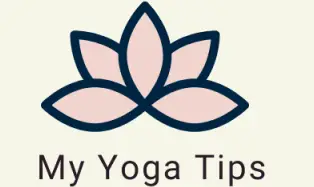Are There Different Types of Yoga?

You’re likely aware that yoga isn’t just a one-size-fits-all practice, but did you know there’s a type for almost every interest and goal? You might find yourself drawn to the dynamic flow of Vinyasa or the precise alignment of Iyengar. Perhaps you’re curious about spiritual paths like Bhakti and Karma yoga or seeking the meditative calm of Restorative practices. This wide array of styles presents both an opportunity and a challenge: how do you decide which one suits you best? Discovering the nuances of these practices could guide you on a transformative journey. What path will you explore?
Key Takeaways
- Yoga encompasses Vinyasa, Iyengar, Bikram, Restorative, and Hatha styles, each offering unique benefits.
- Spiritual and meditative practices in yoga include Raja, Bhakti, Karma, Tantra, fostering mental and emotional well-being.
- Yin Yoga targets deep tissues with long passive holds, enhancing flexibility, circulation, and stress relief.
- Vinyasa offers dynamic, breath-synchronized movement, while Ashtanga follows a fixed, rigorous pose sequence.
- Yoga integrates physical postures, breathing, and meditation to improve overall wellness and balance mind and body.
Exploring Physical Yoga Styles
When you’re exploring physical yoga styles, you’ll encounter a diverse range of practices that emphasize movement and mind-body connection. Dynamic and flow-based yoga like Vinyasa involves fluid movements and breathing synchronization. You’ll find that it enhances body awareness, reduces stress, and hones focus. It’s excellent for toning, strengthening, and aligning your physique, boosting cardiovascular fitness, stamina, and endurance. Meditation and mindfulness are interwoven to enhance concentration and mental wellbeing. Integrating both physical poses and breathing techniques results in improved mental calmness and physical balance.
Precision and alignment-focused yoga, such as Iyengar, prioritizes meticulous alignment with props like blocks and straps. This style fosters patience, mindfulness, and mental clarity. Iyengar yoga utilizes tools that cater to all levels, ensuring a safe and inclusive practice for individuals with various needs. With its focus on alignment, this style is particularly beneficial for beginners looking to build a strong yoga foundation. It’s adaptable for all ability levels, involving extended holds of standing and seated poses for proper alignment. Instructors are well-trained to guide you with detailed instructions. Iyengar yoga can be particularly beneficial for all ages and skill levels due to its detailed focus on alignment and support. Moreover, instructors undergo certification through Yoga Alliance to ensure safe practices and enhance student experience.
For a more intense experience, Bikram Yoga offers heat and intensity. Conducted in a hot room, it comprises a fixed series of 26 poses and two breathing exercises. You’ll sweat out toxins and improve flexibility and strength. This 90-minute practice builds determination and mental resilience within strict guidelines.
Restorative styles like Yin and Restorative Yoga focus on relaxation and deep stretches. They utilize props for support, reducing anxiety and promoting tranquility. These styles enhance flexibility and relaxation, encouraging patience and providing a healing experience.
Understanding Vinyasa and Ashtanga
Diving into the world of Vinyasa and Ashtanga yoga reveals two dynamic styles that, while sharing some elements, offer unique experiences.
Vinyasa yoga centers on breath synchronous movements, forming a rhythmic sequence where each pose blends into the next. This continuous flow not only challenges your body but also calms the mind, offering variety through backbends, twists, and more. It’s adaptable, allowing modifications to meet different physical needs, which makes it accessible for all skill levels. As a practice with roots in ancient Indian traditions like Hatha yoga, Vinyasa yoga has evolved into a style that balances physical rigor with meditative calm, enhancing both strength and flexibility. Notably, Vinyasa also engages multiple muscle groups, contributing to holistic physical development and promoting overall stability. Vinyasa yoga offers numerous physical and mental health benefits, including improved cardiovascular fitness, greater flexibility, strength, and mindfulness while reducing stress and improving mood. While Vinyasa generally requires a baseline level of fitness, it still caters to a wide range of abilities through different class offerings and instructor modifications.
In contrast, Ashtanga yoga follows a fixed series of poses, providing a consistent practice that can be more structured and intense.
Both styles emphasize breath, but Ashtanga maintains a more disciplined approach with a fast-paced, consistent flow. While Vinyasa varies in sequence and pace with instructor discretion driving class structure, Ashtanga’s predictability lies in its rigidity.
Vinyasa classes typically range from 45 to 90 minutes, thriving in diverse settings like studios or at home. With Vinyasa, instructors infuse creativity, integrating breathwork and meditation for holistic benefits.
Ultimately, choosing between Vinyasa and Ashtanga depends on whether you prefer the dynamic adaptability of Vinyasa or the structured intensity of Ashtanga, each enriching your yoga journey.
Benefits of Iyengar and Hatha
Exploring different yoga styles enriches your practice, and understanding the benefits of Iyengar and Hatha yoga can guide you further.
If you’re looking to enhance your physical abilities, Iyengar yoga offers notable advantages. It boosts flexibility, balance, and muscle strength while helping with injury rehabilitation and posture improvement. This style also reduces chronic pain, making it a thorough approach to wellness. Practicing Iyengar yoga can also support better breathing, promoting heart health and overall well-being. Iyengar Yoga is particularly suitable for individuals with injuries due to its emphasis on precision and alignment.
Mentally, you’re likely to develop patience and mindfulness. Iyengar yoga can sharpen focus and clarity, alleviating stress and anxiety. With its emphasis on alignment and the use of props, it accommodates various fitness levels and physical limitations, ensuring a safe practice. Regular practice has been shown to reduce blood pressure, contributing to cardiovascular health and stress management.
On the other hand, Hatha yoga emphasizes foundational techniques, enabling you to achieve better flexibility, physical fitness, and strength. Practicing Hatha can improve cardiovascular health, balance, and weight management.
This style is renowned for promoting relaxation and calm, reducing stress and anxiety. By mastering static poses and breathing, you can foster focus and concentration, enhancing your mood and mental well-being.
Hatha is highly accessible to beginners and can be adapted for different health conditions, making it an inclusive path to inner peace and a balanced system of practice.
Spiritual and Meditative Practices
Often intertwined with physical postures, yoga’s spiritual and meditative practices hold a significant place in enhancing your holistic experience. Exploring Raja Yoga offers you a path to connect with higher consciousness by distancing yourself from ego. This path requires meditation, precise practices, and strict self-discipline, rooted in Patanjali’s Eight Fold Path. Bhakti Yoga might appeal if you feel drawn to devotion and love towards a deity. Here, dedicating your actions to a higher power involves engaging deeply with your heart and emotions, offering a way to practice love and devotion. With Karma Yoga, you focus on selfless action, emphasizing acting without attachment to outcomes. Known for its teachings in the Bhagavad Gita, it invites you to make your actions an offering to the divine, aiming for unison with a higher consciousness. In Tantra Yoga, you’ll explore the body and mind’s sensations and energies, examining concepts like non-dualism and chakras, making it thorough yet grounded. Tantra Yoga’s practices often involve mantras and meditation, emphasizing the unity found in all of life’s experiences. Understanding various meditation styles is important to enjoy and sustain practice, as it allows you to tailor techniques to your preferences and needs. Distinct meditative techniques, such as observer meditation, offer additional insight, where you maintain an impartial stance toward your thoughts, enhancing self-awareness and personal growth. Meditative practices in yoga, such as mindfulness or mantra meditation, are versatile and integral. They encourage you to focus on breath and present moment, promoting deeper self-awareness and tranquility. Just as diverse meditative techniques like movement meditation cater to different preferences, yoga’s rich variety allows practitioners to explore what resonates most with their personal journey.
Embracing Yin and Restorative Yoga
Yin Yoga offers a unique approach to physical and mental wellness by encouraging you to slow down and connect deeply with your body.
By focusing on long, passive holds, it targets deep connective tissues like ligaments, fascia, tendons, and joints. This practice not only enhances flexibility and range of motion but also boosts joint mobility through gentle, sustained stretches. Practitioners should be mindful to approach sensations without forcing the body, cultivating curiosity about these sensations to enhance the practice’s effectiveness. Many poses in Yin Yoga, such as the Sphinx Pose or Supported Fish Pose, work to counteract the negative effects of prolonged sitting, promoting a more balanced alignment. Yin Yoga incorporates the principles of Yin and Yang to balance passive and active energies, aiming for a harmonious state of being. By engaging in mindfulness and presence, Yin Yoga practitioners can profoundly improve their overall quality of life. As Yin Yoga stimulates mindfulness over fitness, practitioners find it valuable for self-exploration and personal growth, inviting a holistic nurturing journey.
You’ll find that stretching these tissues acts like a deep tissue massage, which helps release physical tension and boosts blood circulation, delivering more oxygen to your cells.
Mentally, Yin Yoga reduces stress and anxiety by activating the parasympathetic nervous system, helping lower cortisol levels. It promotes mindfulness and mental clarity, encouraging you to embrace stillness and reflect, which fosters self-love and compassion.
This nurturing environment aids emotional healing and improves sleep by regulating stress and emotional blockages, particularly in poses like wide hip openers.
Integrating Yin Yoga with other practices, you balance the cooling, slow pace with heat-building activities like Vinyasa yoga or running.
It maintains joint mobility and prevents injuries, promoting holistic well-being. In our fast-paced world, Yin Yoga encourages you to slow down and connect more profoundly with your inner self.
Frequently Asked Questions
What Should I Wear to a Yoga Class?
Choose breathable, moisture-wicking clothes for comfort and mobility. Avoid loose or tight garments. Practice barefoot or in grip socks. Bring a mat and water bottle. Wear minimal jewelry, tie back your hair, and follow any dress code.
How Do I Choose a Yoga Instructor?
You’re ready to choose a yoga instructor by checking their certification, experience, and specialization. Take a class to evaluate teaching style, safety emphasis, and compatibility with your goals, ensuring they’re aligned with what you seek.
Can Yoga Help With Weight Loss?
Yoga can definitely help with weight loss. You’ll engage in practices that increase heart rate, build muscle, and reduce stress. Mindful eating and improved sleep contribute to a healthier metabolism, supporting your weight loss journey effectively.
Is Yoga Suitable for Pregnant Individuals?
Imagine yoga as a gentle river supporting life’s journey. For you and your unborn child, prenatal yoga is suitable, promoting flexibility, strength, and calm. Always consult your healthcare provider and choose experienced prenatal instructors.
How Often Should I Practice Yoga for Noticeable Benefits?
You should practice yoga 2-3 times a week for noticeable physical benefits like improved flexibility and strength. Consistency matters more than frequency, so even regular sessions once a week can enhance mental and emotional well-being.
Conclusion
As you explore yoga’s vast landscape, you’ll coincidentally discover that there’s a style perfectly suited to your needs and aspirations. Whether you’re drawn to the fluidity of Vinyasa, the precision of Iyengar, or the tranquility of Restorative yoga, you’ll find that each practice not only enhances physical liveliness but also enriches your mental and spiritual well-being. Embrace this journey, and you’ll uncover a path that’s uniquely yours, fostering growth and harmony in your life.






